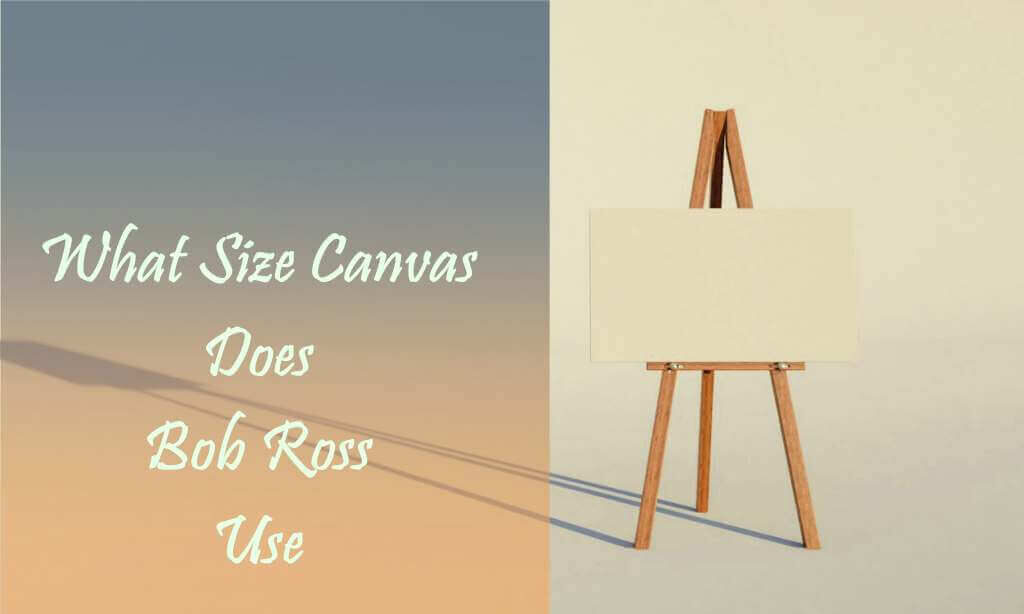

Bob Ross is famous painter known for spreading his passion for painting to many artists. Many aspiring painters wish to emulate his techniques and style.
Choosing the Right Canvas Size
The first step is to know the size of the canvas that Bob Ross uses. Bob Ross typically uses a standard 18″ by 4″ stretched and double-primed canvas in his tutorials. You can hear him mention this size at 00:01:05 in his video tutorials.
Understanding Stretched Canvas
A stretched canvas is a piece of canvas material stretched over a wooden frame, providing a durable and versatile surface for two-dimensional artwork. It is commonly used for paintings, including portraits, landscapes, still life, abstracts, and more. Once your painting is finished, the stretched canvas is ready for display and can be immediately mounted on the wall.
Double Primed Canvas
Bob Ross often chose double-primed canvases. What does double priming mean? It means that the canvas has been coated twice with gesso, a white paint mixture used to prepare the surface for painting. While you can paint on a canvas without priming it, it’s recommended to re-gesso all new canvases, even those that are double-primed. This is because you might not know how your canvas was manufactured, and different manufacturers use various types of primers or gesso.
If your surface is not adequately prepared, it can significantly impact how your oils will interact with the canvas. To ensure a smooth and suitable surface, apply a couple of layers of gesso before you start painting.
Bob Ross himself didn’t usually re-gesso his canvases. Instead, he often applied a layer of white paint to make the canvas wet and smooth for better control. This was likely because his canvases were primed and made especially for him.
Additional Information on Painting Canvases
Canvases come in various types and qualities, which can affect your painting experience and the final outcome of your artwork. Here are some key points to consider:
- Canvas Material: Canvases are typically made from cotton or linen. Cotton canvases are more affordable and widely available, while linen canvases are more durable and have a finer texture, preferred by professional artists.
- Priming: Gesso is used to prime canvases, providing a smooth and absorbent surface that ensures the paint adheres well. There are different types of gesso, including acrylic and oil-based gesso. Acrylic gesso is more common and works well with both acrylic and oil paints.
- Stretched vs. Unstretched Canvas: Stretched canvases are ready to use, while unstretched canvases need to be mounted on a frame before use. Stretched canvases are more convenient, but some artists prefer the flexibility of working with unstretched canvas, especially for large or custom-sized pieces.
- Canvas Thickness: The thickness of the canvas frame, known as the profile, can vary. Standard profiles are around ¾ inch thick, while gallery profiles are thicker, around 1 ½ inches or more. Thicker profiles provide a more substantial appearance and don’t require framing.
- Texture: The texture of the canvas, or its weave, can be fine, medium, or coarse. The choice of texture depends on the desired effect and the artist’s preference. Finer weaves are ideal for detailed work, while coarser textures are suitable for bold and expressive strokes.
By understanding these aspects of painting canvases, you can better prepare your materials and create artwork that meets your artistic vision.


